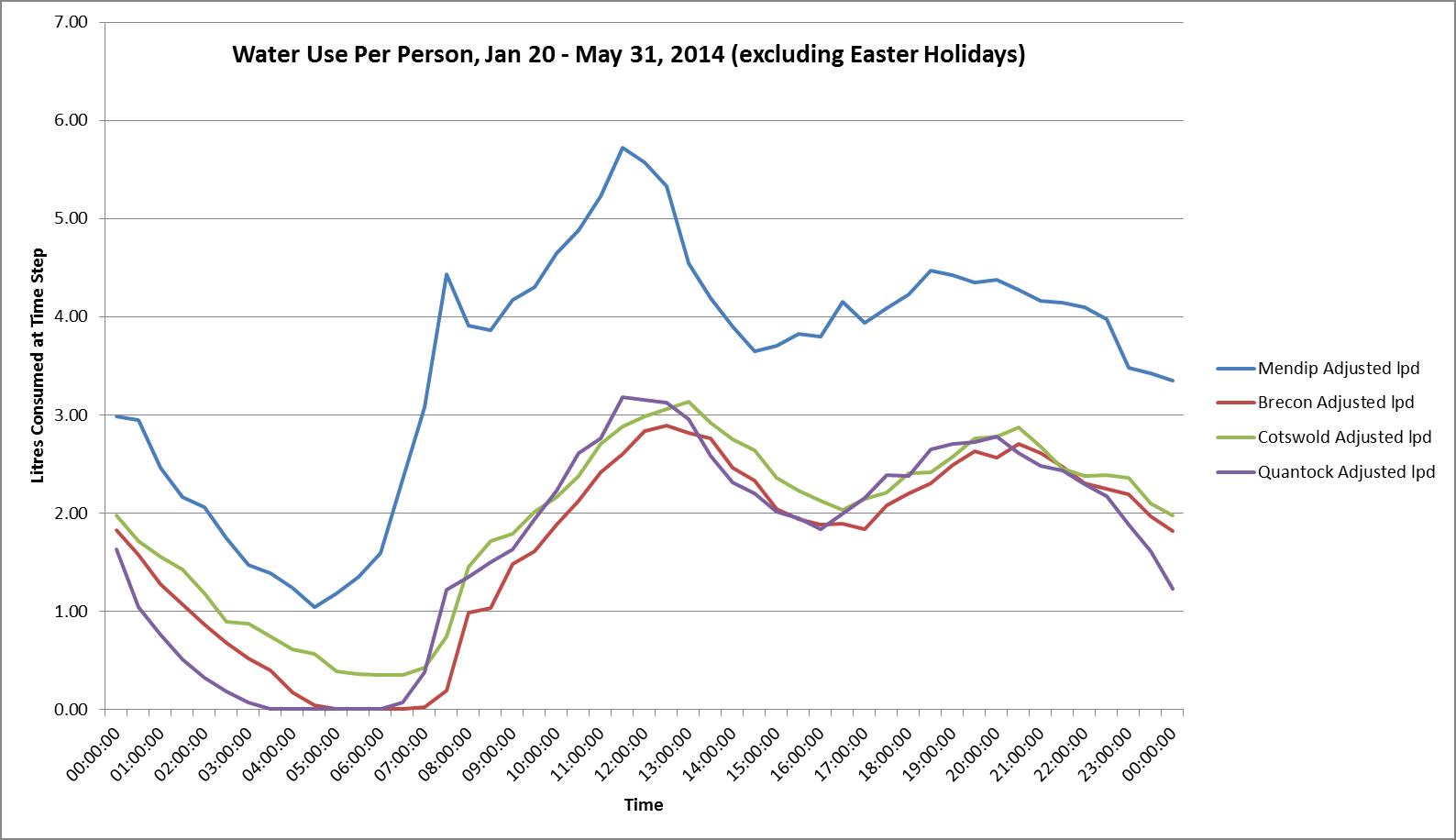There is a need to better understand water use behaviours at a finer granularity, both in quantitative terms and in terms of developing better understanding of the underlying qualitative drivers. Working in collaboration with stakeholders including facilities managers, sustainability professionals and water companies we are developing long-term repeatable scientific explorations of water use in university student accommodations. Such estates offer several advantages including:
- They are sufficiently large (at UWE, Bristol we are studying an estate housing more than 3,000 students).
- They are often annually repopulated, meaning that it is possible to undertake repeatable empirical study of water use and related conservation measures impact.
- It is often possible to organise large scale trials of ‘hard’ (physical fittings) and ‘soft’ (communications and behaviour change) measures for promoting lower water use.
Our ambition is to develop a stronger understanding of the demand side of what can be called the ‘urban hydrosocial cycle’ through the development of better data collection and analytical tools, and through application of these to Bristol and other global case study cities.
Research at UWE, Bristol since 2012 has already revealed that:
- Baseline water use in student populations is larger than anticipated, often exceeding the 150 litres per person per day commonly assumed for the UK population as a whole.
- Hard and soft measures can drive down water consumption, but need to be constantly monitored, partly because fixture failures (e.g. leaky loos) are significant in such estates, but also because of ‘bounce-back’ to more water consumptive behaviours.
- Good facilities management is as important as behaviour change in driving down water use.

Our first peer-revised academic papers reporting on this research were presented at the 2016 Water Efficiency Network (Watef) and Royal Statistical Society conferences, here and here.
